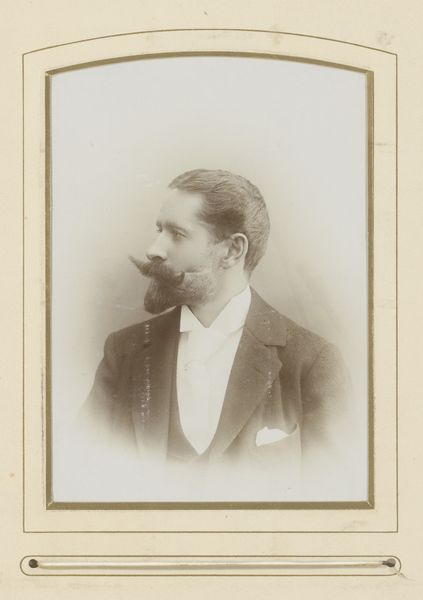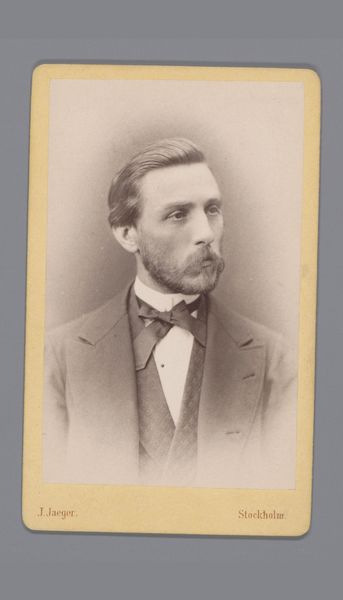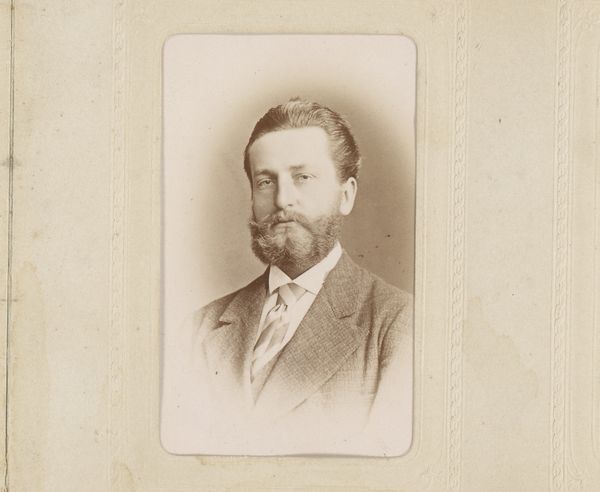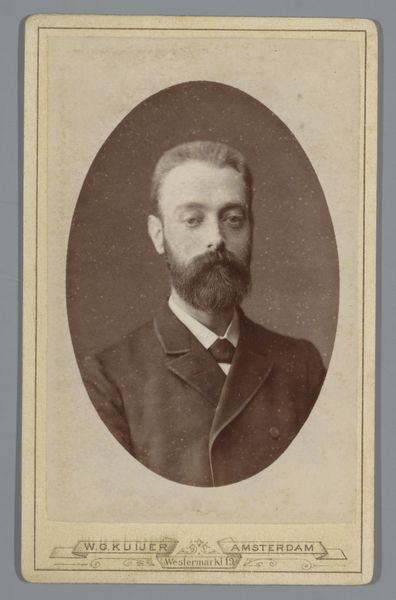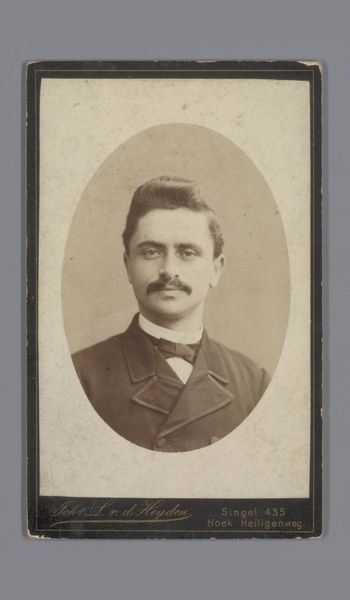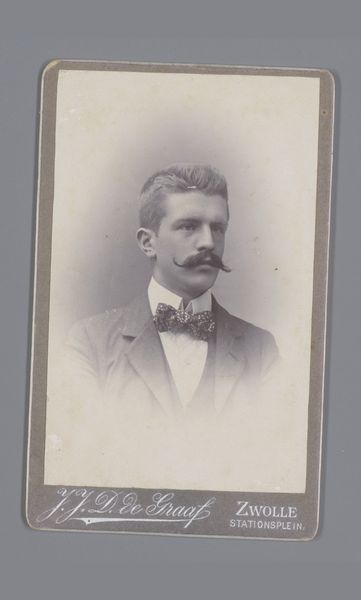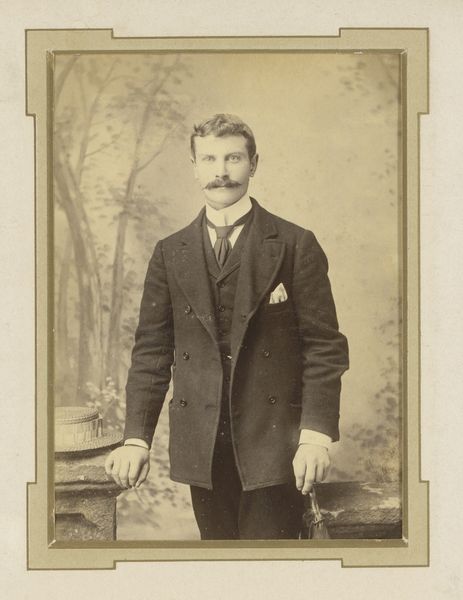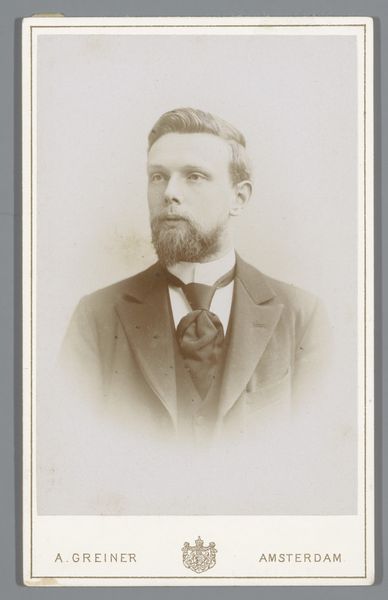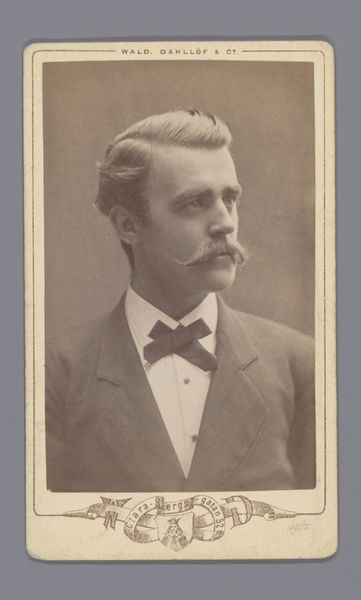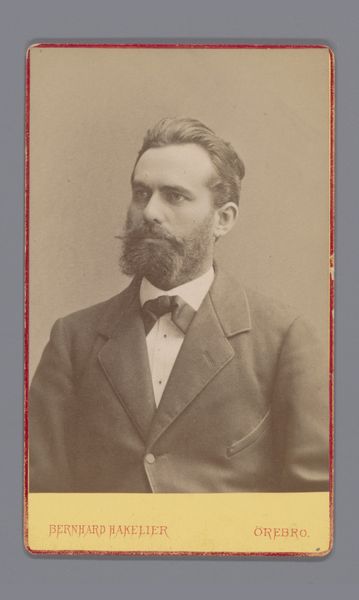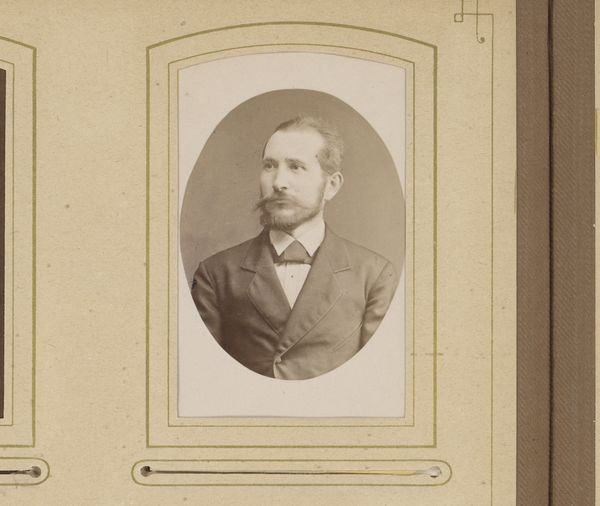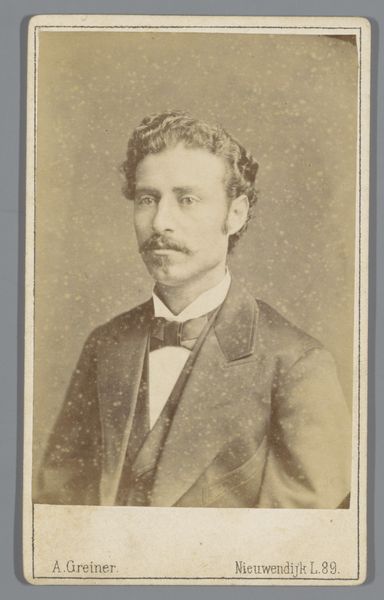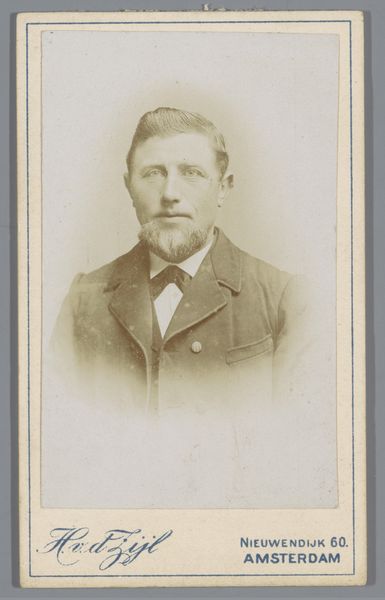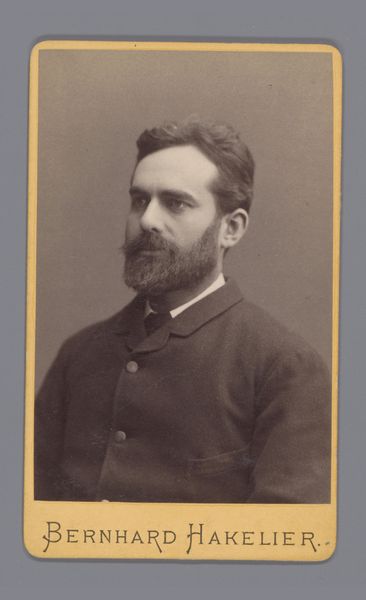
photography, gelatin-silver-print
#
portrait
#
photography
#
historical photography
#
portrait reference
#
yellow element
#
gelatin-silver-print
Dimensions: height 137 mm, width 97 mm
Copyright: Rijks Museum: Open Domain
Curator: This captivating image is a gelatin-silver print, titled “Portret van Henri Verluise.” The work of Alphonse Théodore Acquart, it likely dates from sometime between 1850 and 1900. Editor: My initial impression is one of quiet confidence. The sepia tones and formal attire convey a sense of restrained power. He seems both modern and yet… frozen in time. Curator: Indeed. The print speaks to the evolving role of photography within society. It invites us to think about portraiture in the 19th century and how these images reinforced societal structures related to class and gender. Verluise presents himself in a mode very specific to his time. Editor: I’m struck by how actively Verluise seems to be constructing his own identity. The carefully styled facial hair, the cut of the suit... it all feels very deliberate. Did Acquart's photography play a role in that self-construction? What expectations existed at the time for how one presented themselves publicly? Curator: Precisely. We see performativity emerging here. But also, in the history of photography, especially portraiture, we see power dynamics: photographer and subject, the subject in the photograph and the gaze of the viewer. Even in our contemporary moment. Editor: That’s so true! It does force one to reflect on how little control most people in the past had over how their image was disseminated, unlike now with social media. Considering Acquart's possible influence through lens, composition, even just direction. Did his class or other aspects of identity affect who or what was considered the correct or normal subject? Curator: Absolutely. Considering photography through those lenses provides critical insights into art history, social dynamics, and the evolving interplay of identity. The power structures embedded in images persist to this day, influencing not just how people are perceived but the access they have. Editor: Looking at the detail now, especially the hint of a smile, humanizes him even more, while raising many thought-provoking issues! Curator: A quick view offers an entrancing peek into how historical events, combined with artistic license, reflect on both us and those in the past.
Comments
No comments
Be the first to comment and join the conversation on the ultimate creative platform.
